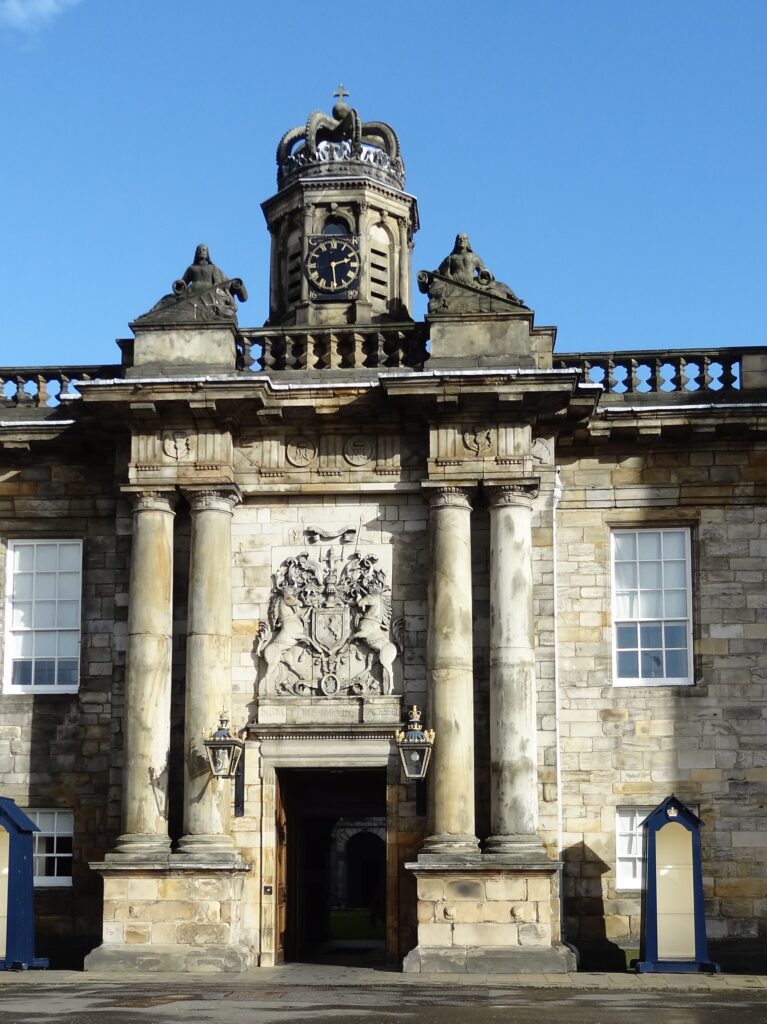Part 4
In our previous Virtual Tour we travelled down the High Street as far as the Netherbow Port and the World’s End Pub. If you missed this article click here for more information. In Part 4 we will follow our Virtual tour of the Canongate which is inaccurately considered to be the last section of the Old Town’s Royal Mile. In reality the Abbey Strand is the last part of the Royal Mile….but more about that later. Once we reach the Abbey Strand we will complete this part of the tour at the entrance to Holyrood Abbey and the Palace of Holyrood House. If you just want to get straight to the Virtual Video tour, just click on the link below.
Origin of the Canongate
It would be fair to say that the Canongate is less commercialised than the remainder of the Royal Mile. Compared to the upper sections of the Royal Mile, closer to the Castle, there are less shops and more residential properties here. Add into the mix some very important historical buildings which reflect how this part of the Royal Mile evolved and was considered a separate entity to the original Old Town of Edinburgh.
So, let us start by explaining why the Canongate is so named. We have King David I who had a fondness for hunting to thank for this. His Royal hunting ground included the forest of Drumsheugh which encompassed much of the present-day parkland surrounding the Palace. However, on one of his hunts according to legend the King became separated from the rest of the hunters. A huge white stag that he had been hunting turned on him, and just as it was about to charge him, he claimed that a flaming cross appeared out of nowhere.
In short, the King was saved and he thanked God for his good luck. To mark this event, he instructed the Augustinian monks to build a monastery near to the spot. Hence we have Holyrood Abbey. The monks were also referred to as Canons, and because they would frequently make their way up to the Old Town, the pathway became known as the Canons’ Gait and eventually the Canongate.
The Old Tolbooth
Because this area fell outside the City Wall, it became a burgh in its own right. Therefore, like the Old Town, it required its own Tolbooth. It was from here that the burgh of the Canongate was administered. The Tolbooth that still stands to this day was originally constructed in 1591, the date engraved into the top left-hand window lintel. Eventually, when the city walls were dismantled, the Canongate was swallowed up into the jurisdiction of the Old Town and the city of Edinburgh. Now the Tolbooth has had new life breathed into it, and has a fantastic museum called the People’s Story.

Next to the Tolbooth, we have an equally impressive and important building, the Canongate Kirk. The Canongate Kirk came about because of the Catholic beliefs of King James VII. A catholic monarch ruling over a predominantly ardent Presbyterian nation was not a popular position to be in. So, the Canongate Kirk was founded in 1688 and completed in 1691 for use by the local townspeople. In the meantime the Abbey, where they had previously worshipped, was converted for use by the Order of the Thistle. The Order of the Thistle was an order that was reestablished by the King. The Canongate Kirk is now the Church used by our Queen when she visits Edinburgh.
Notable “inhabitants” of the Canongate graveyard include Adam Smith, the famous economist, and Robert Fergusson – a young poet who inspired Robert Burns. A lesser known individual is Agnes Maclehose, who it is claimed had an unconsummated affair with Robert Burns whom he wrote to using the cover name of Clarinda.
The Palace of Holyrood House

Because the Canongate ends at the Abbey Strand, the most well-known building here is the Palace of Holyrood House. The construction of the Palace was originally begun by King James IV in the late 1400s. But due to his ongoing conflict with England he was to lose his life at the Battle of Flodden in 1513. And so it was left to his son King James V to complete the Palace. Thereafter, it became the preferred residence of the successive monarchs but was only a fraction of the size of the present-day palace. The original palace was added to by order of King Charles II and by 1680 it was completed. Since then, there has been little change to the building apart from many of the interiors being changed to be used for different purposes.
In the immediate vicinity of the Palace can be found the Abbey Strand Centre which has just gone through a major restoration. For further information on this click here. On the opposite side of the road from the Palace, we can find the nation’s Scottish Parliament. Again, this building would require a whole post of its own. So, if you would like further information about it, click here.

